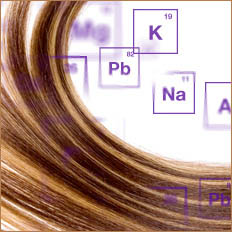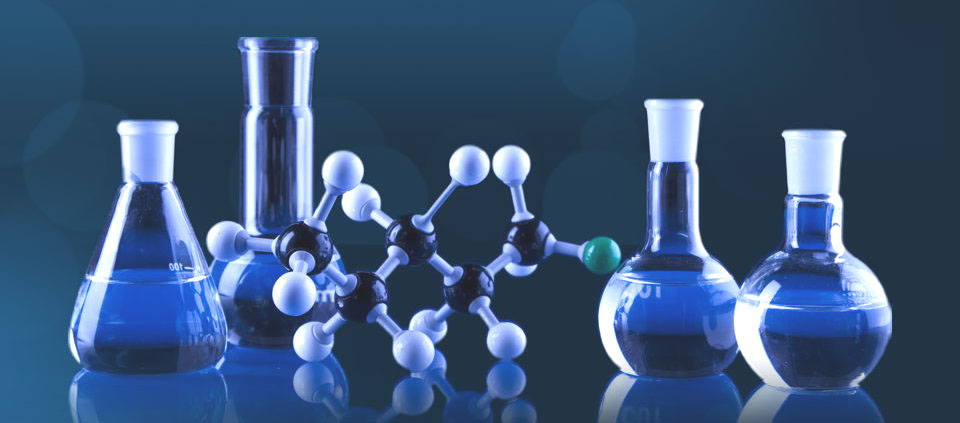Why Hair Tissue Mineral Analysis Is a Valuable Health Tool
What Can Mineral Levels Tell Us?
Hair Sampling Guidelines
Buy HTMA Testing Kit
We all want to be healthy. We all want to live luminously for as long as we are able. How does a Hair Tissue Mineral Analysis (HTMA) help you achieve a longer, healthier life in a world that is often toxic and stressful?
- HTMA addresses your individual bodily needs. Each of us needs a nutritional and cleansing program tailored to our own body's particular requirements. HTMA looks at the last three months of your tissue activity. This allows a view into your body's nutritional state, heavy metal load, and ratios between minerals. Mineral ratios are indicators of adrenal function, thyroid function, carbohydrate metabolism, and your body's overall ability to handle stress.

- HTMA can give you critical facts about your body before you become chronically ill or face a serious disease. Imagine, for example, that you are feeling tired all of the time, so you decide to visit your doctor. You have a blood test and are told you are completely healthy. Huh? What is going on? The reality is that blood tests may look good until something is really wrong. You then have an HTMA, which shows that your sodium/potassium and sodium/magnesium ratios are low, which are clear indicators of an exhausted body.
- HTMA gives you tools to personalize your cleansing program. Your body is designed to cleanse itself; without this mechanism, you would die. If your cleansing needs are being met, you can fight off environmental toxins and the ill effects of stress on your biochemistry. However, most of us aren't operating with balance and efficiency in our cleansing mechanism due to the burdens of stress, pollution, and potentially a lifetime of eating improperly. HTMA allows you to track the removal of heavy metals from your body as well as changes in your mineral ratios — and the corresponding improvement of your overall health.
- HTMA allows you to monitor your electrolyte levels. A common concern among those who cleanse their colons have is whether their electrolytes are becoming imbalanced. Electrolytes are minerals, and key minerals levels in balance are indispensable to your well-being. HTMA will assist you in keeping your electrolyte levels optimal.
- HTMA boosts your motivation and determination. Most of us tend to go through cycles when we are healing. For example, you decide to take a daily coffee enema for a month because you are following the program laid out in my book, Ten Days to Optimal Health. Suddenly, you find yourself sick for three days. What's going on? Should you continue with this program? HTMA illuminates why you may be feeling ill at this point in your healing, and on your next analysis you will see the progress you have made.
▶︎ BUY HAIR TISSUE MINERAL ANALYSIS
HTMA's Three Areas of Measurement and Analysis
- Nutrient mineral and electrolyte levels in the body's tissues, including calcium, chromium, magnesium, selenium, sodium, phosphorous, potassium, nickel, iron, cobalt, copper, molybdenum, manganese, lithium, zinc, and boron.
- Toxic metal levels in the body's tissues, including lead, mercury, cadmium, arsenic, and aluminum.
- Significant mineral ratios, which help determine carbohydrate metabolism, thyroid function, levels of inflammation, adrenal reserves, copper toxicity, tissue breakdown, and calcium shell.

What Can Mineral Levels Tell Us?
Trace minerals are essential in metabolic functions in all phases of the life process. For example:
- Zinc is involved in the production, storage, and secretion of insulin and is necessary for growth hormones.
- Magnesium is required for normal muscular function, especially the heart. A magnesium deficiency has been associated with an increased incidence of anxiety, nervousness, and heart attacks.
- Potassium is critical for normal nutrient transport into the cell. A potassium deficiency can result in muscular weakness, depression, and lethargy.
- Excess sodium is associated with hypertension, but adequate amounts are required for normal health.
In the words of the late author and noted researcher Dr. Henry Schroeder, trace elements (minerals) are "...more important factors in human nutrition than vitamins. The body can manufacture many vitamins, but it cannot produce necessary trace minerals or get rid of many possible excesses."
Mineral imbalances can be caused by improper diet, high levels of physical or emotional stress, medications, pollution, nutritional supplements, and general biological predispositions to certain mineral imbalances inherited from your parents.
Can an HTMA Test Help Determine Vitamin Deficiencies/Requirements?
Minerals interact not only with each other but also with vitamins, proteins, carbohydrates, and fats. Minerals influence each of these factors, and they in turn influence mineral status. Minerals act as enzyme activators, and vitamins are synergistic to minerals as coenzymes. It is extremely rare that a mineral disturbance develops without a corresponding disturbance in the synergistic vitamin(s). It is also rare for a disturbance in the utilization or activity of a vitamin to occur without affecting the synergistic mineral(s).
An example of this can be seen in the relationship between vitamin C and the iron and copper levels in your body. Vitamin C plays a vital role in your body's ability to absorb iron, and also reduces copper retention. Boron and iron influence the status of vitamin B2. Vitamin B2 affects the relationship between calcium and magnesium. Vitamin B1 enhances sodium retention. B12 enhances iron and cobalt absorption. Vitamin A enhances the utilization of zinc, while antagonizing vitamins D and E. Therefore, evaluating the body's mineral status provides good clues of vitamin status and requirements.
Why Use Hair instead of Blood?
Firstly, it is easy and painless to cut hair and send it to a lab from the comfort of your own home. Secondly, clinical results have shown that a properly obtained sample can give an indication of mineral status and toxic metal accumulation following long-term or even acute exposure, because hair is one of many places that the body eliminates minerals and heavy metals. Thirdly, a hair tissue mineral analysis reveals information about a unique metabolic world, intracellular activity, which cannot be seen through most other tests.
In a study by the National Institute of Health (NIH) on vitamin D deficiency and hair mineral analysis, researchers stated that "A well-known test such as the red blood cells is fairly expensive, invasive, and less informative. On the other hand, a hair mineral analysis can be considered an accurate, excellent, highly informative tool to measure mineral imbalance associated with vitamin D deficiency."
One specific benefit of testing hair over blood can be seen when testing for lead levels in the body. For 30-40 days following acute exposure, elevated levels of lead may be undetectable via a blood test. This is due to the body removing the lead from the serum as a protective measure and depositing the metal into tissues such as the liver, bones, teeth, and hair. Low calcium and iron levels can also be difficult to detect early on using a blood test.
Hair is used as one of the tissues of choice by the Environmental Protection Agency (EPA) in determining toxic metal exposure. A 1980 EPA report stated that human hair can be effectively used for biological monitoring of the highest priority toxic metals. This report confirmed the findings of other studies in the U.S. and abroad, which concluded that human hair may be a more appropriate tissue than blood or urine for studying community exposure to some trace elements.

Hair Sampling Guidelines
The Best Type of Hair Sample
The accuracy of a mineral analysis depends upon many factors. While the laboratory is responsible for the technical aspects of the test, the results will only be as good as the raw material or sample that is received. For this reason, the more care that is exercised by the person sampling the hair, the better the results will be.
Head hair provides the best sample, because it is clean and grows fast and evenly. If head hair is not available, however, pubic hair or other body hair may be used. It's important not to mix sample sources, such as half head hair and half pubic hair, which would provide unreliable results.
Hair Treatments and Perspiration
Most shampoos, rinses, conditioners, tints, sprays, and other hair products don't affect the test for three reasons:
- Most of these products do not contain metals, which is all the hair test measures. Review the ingredients of all your hair products carefully. to ensure that metals are not present. For example, Grecian Formula shampoo included lead acetate as an ingredient until approximately June 2018. Head & Shoulders shampoo contains zinc and could elevate zinc readings. Selsun Blue shampoo contains selenium and could elevate this reading.
- Hair is only 10-15% porous. This means that not very much is absorbed by the hair itself. (The scalp is porous and can absorb many chemicals.)
- Most shampoos are only applied for 15-30 seconds, not long enough for much absorption to take place.
Home dye/color products do not alter the test appreciably. However, it is best to wash the hair at least 6-8 times after a color treatment before sampling. After a beauty parlor permanent or bleach treatment, ideally it would be best to let the hair grow out for 6-8 weeks. However, you may make a clinical decision that it is not possible to wait this long. The test may not be as accurate in this case, but the readings can still be very useful.
Heavy sweating just before sampling can increase sodium and potassium readings. Swimming in pools can increase your levels of copper and sodium.
How to Sample the Hair
Be sure to sample enough hair. The paper scale you receive when you order the test should tip to the other side. One of the most frequent problems at the laboratory occurs when too little hair is sent (less than 125 mg).
Scissors should be clean and sharp. Steel scissors are better than aluminum scissors. Be sure to cut off the ends of any hair that is over 1" to 1.5" long. Short hair can be a challenge, and thinning shears can often be helpful. Thinning will allow a more even sampling without leaving any "holes". Thinning shears are best when the hair is less than 1.5" long.
Hair should be dry when it is being sampled. Otherwise it cannot be weighed correctly. The sample should be taken between 4 and 20 hours after washing. This allows the hair to re-equilibrate after washing. Hair that has not been washed for more than 4 or 5 days is more prone to environmental contamination. If a salt-based water softener is used in the home, hair sodium levels may be affected.
Samples can be stored if needed, as hair does not deteriorate with time.
Retest samples should be taken from the same area as the original sample, if at all possible. This assures continuity from sample to sample. However, it is not necessary to find the precise strands of hair for the next retest. Simply take the sample from the same general area.
Optimal Health Network's HTMA Process
- When you order a Hair Tissue Mineral Analysis (HTMA), we will mail you a testing kit in a regular envelope, which you should receive within 5-7 days.
- As noted above, accuracy of a mineral analysis depends upon many factors. While the laboratory is responsible for the technical aspects of the test, the results will only be as good as the sample that is received. For this reason, the more care that you exercise sampling your hair, the better the results will be. Follow the instructions closely, and make sure you send enough hair.
- After you send the kit back to the lab with your hair sample, it takes approximately 10 days for Optimal Health Network to receive the test results from the lab.
- We will email a PDF of the test results to you within 2-3 days after we receive them from the lab. These will be emailed to the email address associated with your Optimal Health Network account.
- When you receive your emailed test results from us, please fill out our secure client intake form. After you submit the form, you will receive a link to schedule your complimentary 15-minute consultation with Kristina via her booking calendar.

Analytical Research Labs, Inc.
Not all HTMA labs are equal. Most labs wash hair samples before testing them, which erratically washes the water-soluble elements and minerals out of the sample, creating much less accurate results.
Analytical Research Labs, Inc. (ARL), our lab partner, is one of only two labs that does not wash the hair samples before testing them. Additionally, ARL has advanced quality control procedures in place at multiple stages of the testing process. In our opinion, ARL provides the best and most accurate HTMA test in the country.
▶︎ BUY HAIR TISSUE MINERAL ANALYSIS